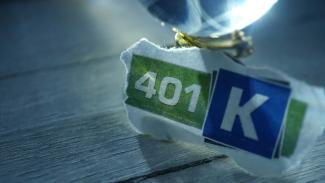
Is a 401(k) Rollover the Right Move for You?
Wallace D. Wattles, author of The Science of Getting Rich, emphasized having the right tools are crucial, but using them correctly is just as important. When it comes to retirement savings, few tools are as powerful as a 401(k), but are you making the most of yours?
Consider this: what happens to your 401(k) when you change jobs? The idea of staying with one employer for an entire career is a thing of the past, with the average worker switching jobs at least 12 times during their lifetime. This means you’ll likely face important decisions about your retirement savings whenever you leave a job.
Now is an ideal time to think about a 401(k) rollover. To build a stable and satisfying retirement, it’s smart to simplify your financial portfolio, reducing fees, expanding investment choices, and customizing your plan to fit your unique needs. Let’s explore the essentials.
What Is a 401(k) Rollover?
A 401(k) rollover is an option you have when you leave a company and want to transfer your investments into an individual retirement account (IRA). Normally people do this if they are leaving a company, switching to a new company, or retiring, but you can also do a 401(k) rollover into another 401(k) with a new employer.
Pros of a Rollover
The main benefits of a rollover from a 401(k) to an IRA are the following:
- More options: Most 401(k) plans have a limited selection of mutual funds and bonds to invest in. IRAs offer those plus other options, such as stocks, exchange-traded funds, and income-producing real estate.
- Lower expenses and management fees: This will vary depending on your 401(k), but usually having an IRA decreases management fees, administrative fees, and expenses related to each fund you have.
- Convert from a tax-deferred account to a Roth account: Contributions to a 401(k) plan or traditional IRA are made using pre-tax dollars, which means distributions are taxed at the time of withdrawal. Rolling money from a traditional 401(k) into a Roth IRA gives you the option of paying taxes now so you won’t have any taxes due at the time of withdrawal in the future. If this is an option you are considering, you should discuss with your advisor and your tax professional to consider current and future forecasted tax rates to see which pathway makes the most sense.
Cons of a Rollover
Some potential cons of a 401(k) rollover include:
- Creditor protection risks: Leaving your funds in a 401(k) might provide creditor and bankruptcy protections, which might not be the case with an IRA, depending on your state’s IRA rules.
- Less accessibility: Although it might be possible to get a loan from an employer-sponsored 401(k) account, you cannot from an IRA, which means the funds may be less accessible.
- Account fees: You may be hit with higher account fees compared to a 401(k), which has access to lower-cost institutional investment funds due to group buying power.
Required Minimum Distributions (RMDs)
Tax-deferred retirement plans are subject to required minimum distributions (RMDs). Taxes are due at the time of withdrawal. The SECURE Act changed the timeline for taking RMDs for both IRAs and 401(k) plans. For IRAs, anyone who reached age 70½ on or after January 1, 2020, will not be required to begin taking RMDs until April 1st of the year after they reach age 73. (Under the SECURE 2.0 Act, the RMD age will rise to 75 in 2033.) Failure to take RMDs at the appropriate time will result in a hefty 25% penalty on any distributions you fail to take on time.
Some 401(k) plans (but not all) allow you to leave money in the plan until you retire, effectively delaying RMDs, as long as you are still working for the employer who sponsored your 401(k) plan. If you leave any 401(k) funds in your prior employer’s account, the exception will not apply to those funds. The exception also does not apply to IRAs; if you have funds in an IRA, you must start taking RMDs when you reach the age limits regardless of when you retire.
Early Withdrawals
Both IRAs and 401(k)s include a 10% penalty if you withdraw money before the age of 59½. The 10% penalty is in addition to taxes you will owe on the money no matter what. There is one exception for 401(k) plans, known as the Rule of 55; if you retire at 55 or later, you can take penalty-free withdrawals from your current 401(k) sponsored retirement plan. The Rule of 55 does not apply to IRAs, nor does it apply to 401(k) plans still housed in a prior employer’s account.
How to Execute a Rollover
Thankfully, rollovers are pretty simple. Once you have chosen a bank, financial institution, or online investing platform, you contact your 401(k) plan administrator to let them know where you want your funds transferred. You can choose to do either a direct or indirect rollover. A direct transfer is generally recommended because it is the simplest form of getting money from one point to the next, and you do not have to worry about how or when to deposit funds.
You also have the option of doing an “indirect rollover,” where your employer cuts you a check and you are responsible for depositing the funds into a new tax-deferred investment account within 60 days. Your employer will be required to withhold 20% of the funds to pay taxes due (this 20% comes back to you in the form of a tax credit when you file your return). This means you will only receive a check for 80% of the value of your 401(k), and you will need to replace the 20% withheld amount from your personal funds or another source. If you fail to deposit the funds to a tax-deferred account within 60 days, the transfer will be treated as an early withdrawal and the entire amount will be subject to an additional 10% penalty.
Could a 401(k) Rollover Be the Best Move for You?
Tools are designed to simplify tasks and boost efficiency, so why not fully leverage your 401(k)? While rollover options offer flexibility, choosing the right one can be confusing. Since every situation is different, a one-size-fits-all approach rarely works. Before making any decisions, it’s wise to consult with a financial professional.
At The Rosamond Financial Group, we’re here to answer your questions and help you explore your options. By understanding your unique circumstances, we can determine whether a 401(k) rollover aligns with your goals and develop a personalized retirement plan tailored to your ideal future.
Our mission is to break down complex financial topics into clear, manageable steps, so you can implement your financial plan with confidence. Ready to begin? Book a free introductory meeting online!
About Preston
Preston Rosamond is a financial advisor and the founder of The Rosamond Financial Group Wealth Management, LLC with over two decades of industry experience. He provides comprehensive wealth management and financial services to successful business owners, corporate executives, and affluent retirees who enjoy simplicity and seek a professional to help them pursue their goals. Preston personally serves his clients with an individual touch, a sincere heart, and his servant’s attitude is evident from the moment you meet him. Learn more about Preston or start the conversation about your finances with him by emailing solutions@rosamondfinancialgroup.com or schedule a call on his online calendar.

